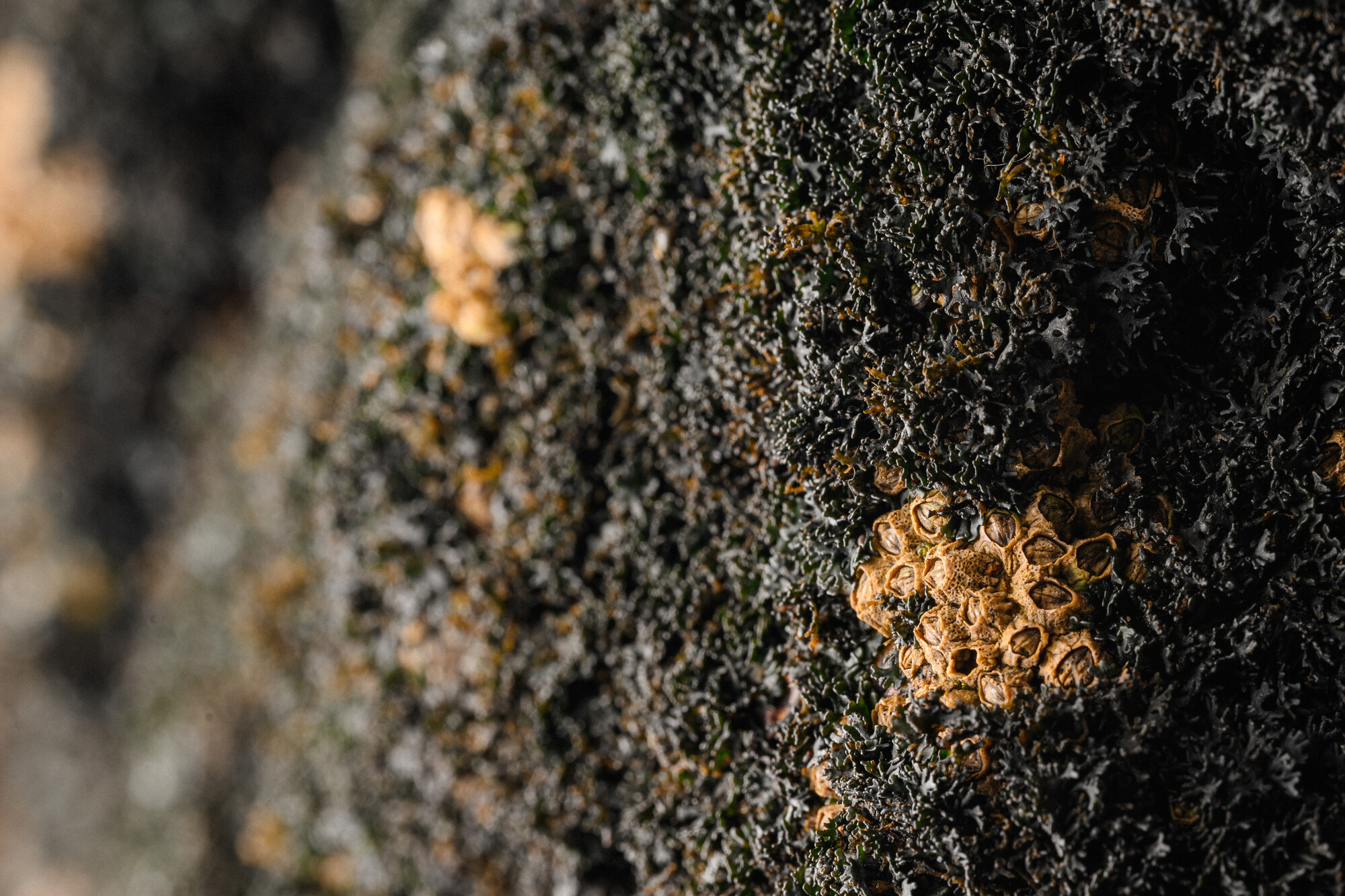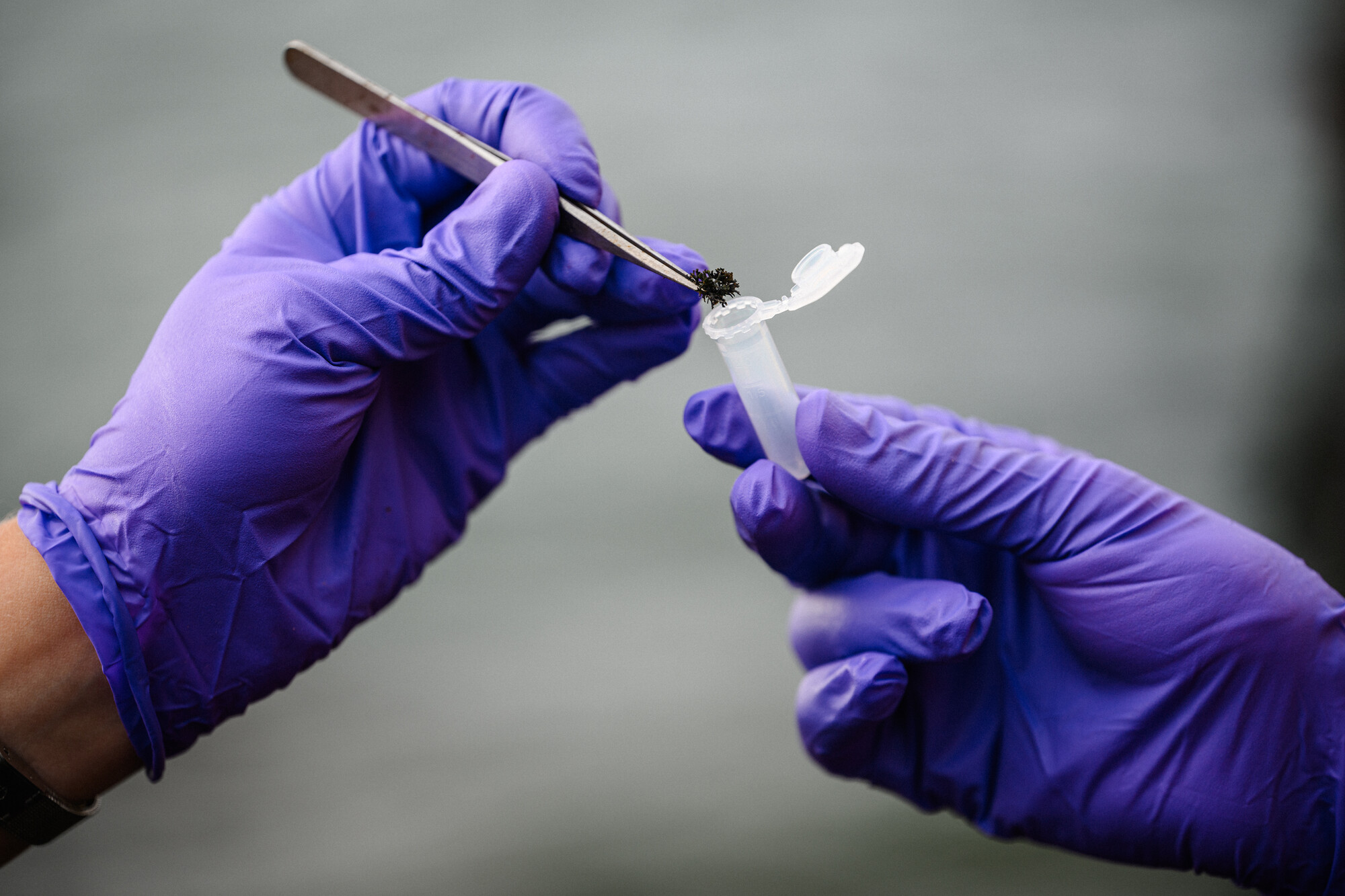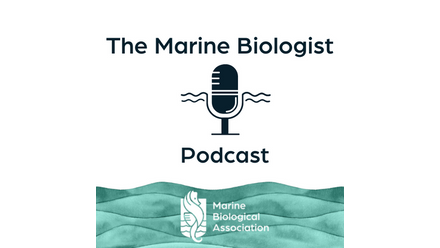NEW INSIGHTS INTO THE BIOLOGY OF AN INTERTIDAL LICHEN
The intertidal zone of rocky seashores is not the place we normally go to when we think about fungi. As an environment, the seashore is far from the grasslands and forest floors of the mushrooms and bracket fungi that we’re most familiar with. Inland fungi like these grow in association with the roots of trees or on rotting stumps, obtaining the sugars they need for survival by releasing enzymes to digest wood or other sources of carbohydrate. Marine environments might not seem like the ideal habitat for fungi, yet many manage to make the rocky shores their home. A large proportion of these are lichens, symbiotic relationships between a fungus and its ‘photobionts’—tiny photosynthetic organisms that the fungus ‘farms’ for sugars. By forming these associations, lichen fungi are able to thrive in all kinds of challenging environments, becoming dominant species in otherwise inhospitable habitats.

The black marine lichen, Lichina pygmaea. © MBA.
One such organism is Lichina pygmaea, the black marine lichen. L. pygmaea is a common sight in the intertidal zone of northern European coastlines, where its bushy appearance makes it easy to confuse with a seaweed. Unusually, L. pygmaea has been shown to have two photobionts, Rivularia and Pleurocapsa, both of which are types of photosynthetic bacteria called cyanobacteria. In new research, scientists from the MBA have revealed details about the relationship between L. pygmaea and its cyanobacterial photobionts that help us to understand how marine lichens are adapted to life in the intertidal zone.By measuring RNA (the signal that a gene has been ‘turned on’) produced by the fungus and its photobionts at high and low tides, we showed that different members of the symbiosis became more active under different conditions. Whereas the fungal component of the symbiosis was most active during high tide, the cyanobacterial photobionts behaved differently to each other: Rivularia was more active at high tide while Pleurocapsa was more active at low tide. The findings suggest that by having a dynamic response to a dynamic system, the lichen fungus is able to deal better with the stress of living in and out of seawater.

Inset below. Sampling Lichina pygmaea. © MBA.
The story didn’t end there, though. To survive in seawater, some cyanobacteria produce disaccharide sugars which they use to protect themselves from salt stress. While these sugars are a potential source of energy for the fungus, the molecules are too big to be directly absorbed by L. pygmaea. The RNA data showed that the gene for an enzyme involved in breaking disaccharides into simpler glucose molecules was switched on during high tide, suggesting that the lichen fungus benefits from the marine-specific adaptations of the cyanobacteria. Importantly, this disaccharide-breaking enzyme was predicted to exist outside of the cell, suggesting that the lichen fungus might digest sugars outside of its cells, just like forest fungi release enzymes to degrade rotting wood.
We hope that this study will stimulate new research into both adaptation of marine fungi and understanding nutrient metabolism in lichen symbiosis. •
Dr Nathan Chrismas (nchrismas@rbge.org.uk) X: @cyanoevo
Further reading
Chrismas, N., Tindall-Jones, B., Jenkins, H., Harley, J., Bird, K., & Cunliffe,
M. 2023. Metatranscriptomics reveals diversity of symbiotic interaction and mechanisms of carbon exchange in the marine cyanolichen Lichina pygmaea. New Phytologist. https://doi.org/10.1111/nph.19320

